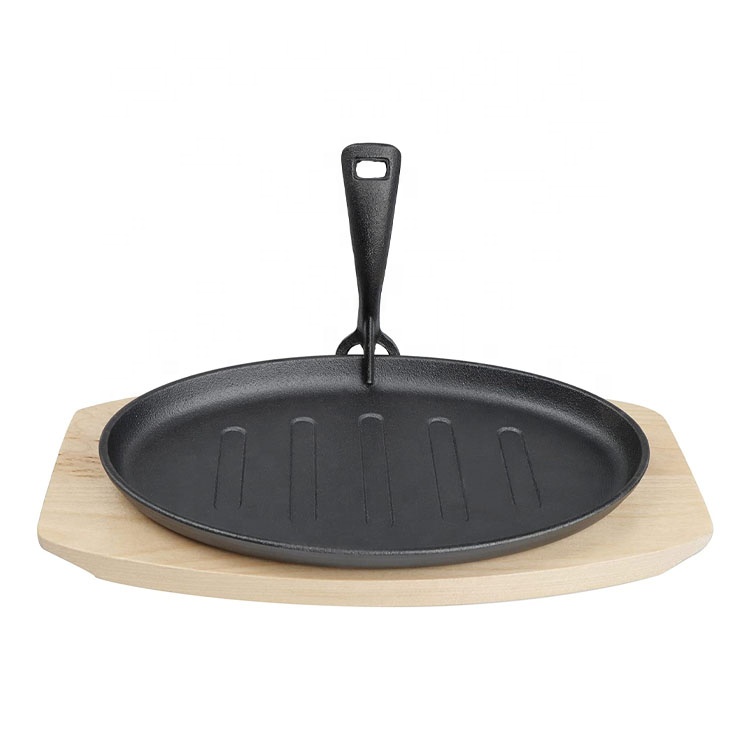
using a cast iron grill pan
The Art of Cooking with a Cast Iron Grill Pan
Cast iron cookware has a rich history, treasured by chefs and home cooks alike for its durability and exceptional heat retention. One of the most versatile and beloved pieces in this category is the cast iron grill pan. Known for imbuing a smoky flavor and creating perfect grill marks, this kitchen essential allows you to experience the joy of grilling all year round, regardless of the weather outside.
Advantages of Using a Cast Iron Grill Pan
The benefits of using a cast iron grill pan are numerous. First and foremost, they are incredibly durable. With proper care, cast iron pans can last a lifetime, even becoming family heirlooms. Unlike non-stick cookware, cast iron develops a natural non-stick seasoning over time, enhancing its cooking surface. This seasoning is created through the cooking process; fats used in cooking polymerize and bond to the iron, creating a smooth surface.
Furthermore, cast iron can withstand high temperatures, making it ideal for achieving that coveted sear on meats and vegetables. The material's ability to maintain heat means that food cooks evenly, and the grill marks that form are not only aesthetically pleasing but also enhance the flavor through the Maillard reaction—a chemical process that occurs when food is cooked at high temperatures.
Preparing Your Cast Iron Grill Pan
Before using your cast iron grill pan, it’s essential to prepare it correctly. If you’re using an unseasoned pan, wash it with warm, soapy water and dry it thoroughly. Apply a thin layer of vegetable oil or another fat to the cooking surface to help create the non-stick layer. Preheat your grill pan over medium-high heat for a few minutes before adding your ingredients; this ensures a great sear and helps prevent sticking.
Cooking Techniques
using a cast iron grill pan

One of the most popular methods of cooking with a cast iron grill pan is grilling meats. Whether you're preparing chicken breasts, steaks, or pork chops, the flavor and texture are greatly enhanced. Simply marinate your protein beforehand to add depth and moisture, then place it in the preheated pan. Allow it to cook undisturbed for a few minutes before flipping for those enticing grill marks.
Vegetables also shine in a grill pan. Asparagus, bell peppers, zucchini, and mushrooms can be sliced and tossed with olive oil, salt, and pepper before being placed on the grill. Stake out a few minutes on each side until they reach the tenderness you desire. The intense heat caramelizes the natural sugars in the vegetables, adding a delectable depth of flavor.
Another lesser-known but fantastic use of your grill pan is to cook sandwiches, particularly paninis. The weight of the cast iron provides an excellent press, ensuring a golden, crispy crust while keeping the cheese perfectly melted.
Cleaning and Maintenance
Proper care of your cast iron grill pan is vital in prolonging its life. After cooking, allow the pan to cool slightly. Avoid using soap, as this can strip the pan of its seasoning. Instead, wipe it down with a paper towel or rinse it with warm water and a soft sponge. Tough, stuck-on bits can be removed with coarse salt as an abrasive scrubbing agent. After cleaning, dry the pan thoroughly and apply a light coat of oil to keep the seasoning intact.
Final Thoughts
Cooking with a cast iron grill pan opens up a world of culinary possibilities. Its ability to provide excellent heat retention and the capability to create that delicious grilled flavor makes it a must-have for any kitchen. Whether you're a novice cook or an experienced chef, mastering the use of a grill pan will elevate your cooking game. With care and attention, your cast iron grill pan will not only deliver delicious meals but also become a cherished tool in your kitchen arsenal for generations to come.
So, next time you're craving that grilled flavor, don’t reach for the outdoor grill. Instead, bring out your trusty cast iron grill pan and let it work its magic inside your kitchen—no matter the season. Happy cooking!
-
Season Cast Iron Perfectly with GPT-4 Turbo TipsNewsAug.01,2025
-
High Quality Cast Iron Cookware - Baixiang County Zhongda MachineryNewsAug.01,2025
-
Premium Cast Iron Pan: Durable & Perfect HeatNewsAug.01,2025
-
High Quality Kitchen Durable Black Round Cast Iron Cookware Pancake Crepe Pan-Baixiang County Zhongda Machinery Manufacturing Co., Ltd.NewsAug.01,2025
-
Cast Iron Cookware - Baixiang County Zhongda Machinery | Nonstick, Heat ResistanceNewsAug.01,2025
-
High Quality Kitchen Durable Black Round Cast Iron Cookware - Baixiang County Zhongda Machinery | Non-Stick, Heat Retention, DurableNewsJul.31,2025


